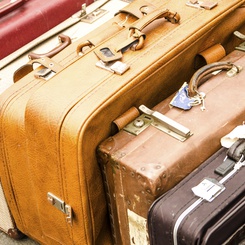Over the past 10 years, rapidly changing conditions in the luxury market have been leaving more room for younger, more accessible brands. Coach and its direct competitors like Michael Kors and Kate Spade have jumped at the opportunity and taken advantage of a growing market for quality, yet affordable leather goods. These brands have chosen to walk a fine line between a desire to be exclusive – and covet the “True Luxury” label – and a desire to reach out and attract new customers with more accessible products.
But is the siren song of the ‘affordable luxury’ market a trap? Suffice it to say that it’s both a paradox and a risk that brands like Coach have chosen to take. In fact, once upon a time, Coach was a trailblazer in this arena. More recently, the brand has suffered some setbacks – including a fall in share prices and poorer performance compared with some of its competitors. But it still has some key ingredients that will help it regain momentum and give both its ‘accessible’ competitors – as well as established, European “true luxury” brands – a run for their money.
Ingredient 1: History
Research has shown that a historic element plays an important role in building the desirability and exclusive image of luxury brands. And while Coach didn’t start out as a ‘true luxury’ brand, it has a relatively long history as a producer of ‘aspirational’ products that consumers desired to own even if it remained out of reach for many: the first leather bags made in their New York City loft in 1941 were handcrafted, made of high-quality leather, and were both timeless and expensive. While it may not have been luxury per se, Coach has long been an established, American producer of high-end goods.
Ingredient 2: Experience
Coach is one of the most experiences brands when it comes to ‘affordable luxury’. Its foray into this uncharted territory began when the company joined the Sara Lee Corporation in 1985. Under then CEO Lew Frankfort, the brand began to reposition itself to take advantage of the gap on the market for affordable, quality bags. Part of this strategy was an expanding offering of lower-priced accessories whose affordability would enable younger consumers to buy a coach product, and hopefully trade-up into more expensive offerings as they matured with the brand. Ultimately, Coach’s experimented prompted marketing experts to coin the term “affordable luxury”.
They were one of the first brands to experience the paradox: in the luxury industry, the more desirable the brand becomes, the more it sells but the more it sells, the less desirable it becomes! Brands get their “luxury” status due to their exclusivity. And sure enough, Coach was caught in the dilemma of being “true luxury” or “affordable luxury” compared to its competitor European brands such as Gucci and Prada. Experience taught Coach that Gucci and Prada were better at one thing in particular: creating a ‘dream factor’.
Ingredient 3: Dream Factor
Over time, the ‘affordable luxury’ boom proved that ‘dream factor’ was an essential ingredient to a brand’s luxury status. But Coach built its own dream factor by repositioning itself as a modern American Lifestyle brand. As defined by Coach Stylist Reed Krakoff, this new American luxury meant products has a distinctive aesthetic as well as an attractive price-point.
But in order to also reach for the ‘true luxury’ label as per the traditional European standards, Coach also dedicated a part of their line to aspirational products – which included a legacy collection inspired by designs from founder Bonnie Cashin, to capitalize on the rich history of the brand – at price-points 45% higher than the rest of the collection.
Coach has also positioned their stores closer to other luxury labels in major cities, including a flagship store on Madison Avenue, across the street from the Louis Vuitton flagship. They’ve managed to irk LVMH, which is a good sign that their strategy is working.
While being true to the DNA of the brand, they’ve been able successfully negotiated the “accessible luxury” balancing act, while also stepping in on “true luxury” territory. It’s not an easy line to walk, but Coach looks set to keep balancing the affordable luxury paradox. At any rate, the 21st century battle between “affordable” and “true luxury” brands looks set play on.









